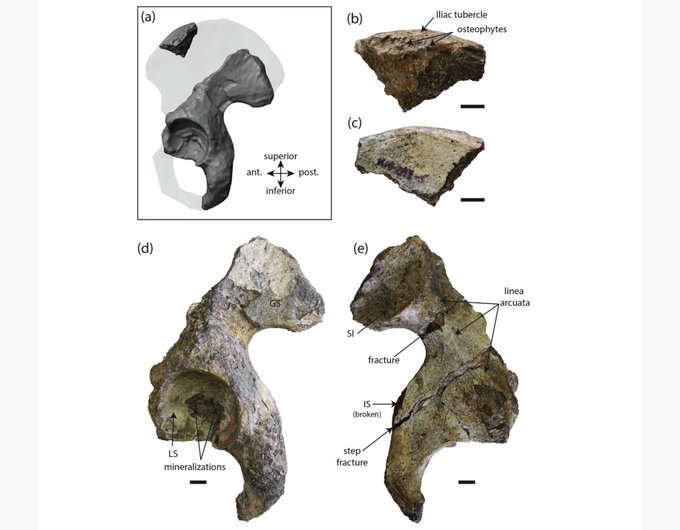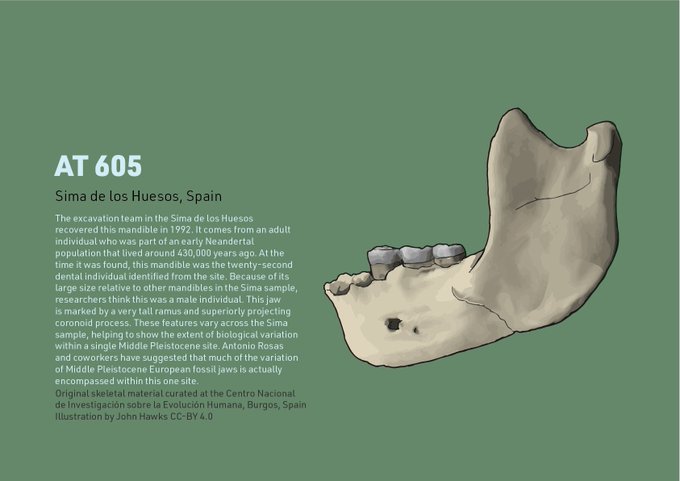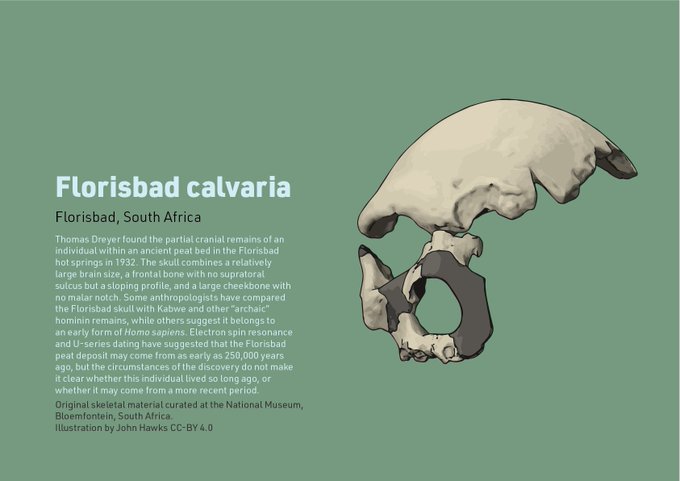While the crania from Omo Kibish have received more attention than the postcranial skeleton of Omo 1, @ashleyshammond and coworkers found that the fragmentary left hipbone has low iliac flare and smaller iliac tubercle like hipbones of most living people. https://t.co/miX56yTTpL
To me the most remarkable observation is that 17 out of the 20 known skulls have healed depressed fractures, a total of 57 observed across all individuals. A heatmap shows where blows were struck.
Why avoid the obvious similarities between these fossils, especially the NR-2 mandible, and Neandertals, particularly Krapina? That relationship is the interesting one, with clear relevance to paleoclimate changes. Nesher Ramla may be a likely Krapina source population.
The Sima de los Huesos site is very important in understanding the kind of morphological variation that occurs within a single #hominin population. By itself, a jaw like AT 605 might seem like an outlier, but others within the sample share aspects of its form. #paleoanthropology
The LB6 fossil #hominin is the second most complete skeleton of Homo floresiensis from Liang Bua, Indonesia. The jaw appears to represent a smaller individual than the LB1 skeleton. Its complete radius, somewhat bent due to a break, is 157 mm long. #paleoanthropology
In 1999, a #hominin fossil was "found" in New York City. In this case, the fossil was repatriated to Indonesia where it belongs. Other fossils may still circulate within an illicit international antiquities trade. #paleoanthropology
Aroeira 3 was found in a context with abundant Acheulean tools and evidence of hominin-controlled fire. It is a valuable comparison to the Sima de los Huesos #hominin sample, at similar geological age but with only a single handaxe and no remains of fire. #paleoanthropology
MRD-VP-1/1 was the first relatively complete skull known for Australopithecus anamensis. Its similarities with later #hominin species like Au. africanus and Paranthropus may suggest that such traits evolved in the common ancestor of all bipedal hominins. #paleoanthropology
The Elandsfontein farm near Saldanha Bay, South Africa, has an extensive fossil deposit eroded from ancient sand dunes. The #hominin calvaria from this deposit is of unknown age, and is similar to some "archaic" human fossils. #paleoanthropology
The #hominin skull from Florisbad, South Africa, is a particular frustration for me. An effort to date the specimen made it a possible contemporary of #Homonaledi, but natural uranium concentration of hot spring peats likely makes this unreliable. #paleoanthropology











